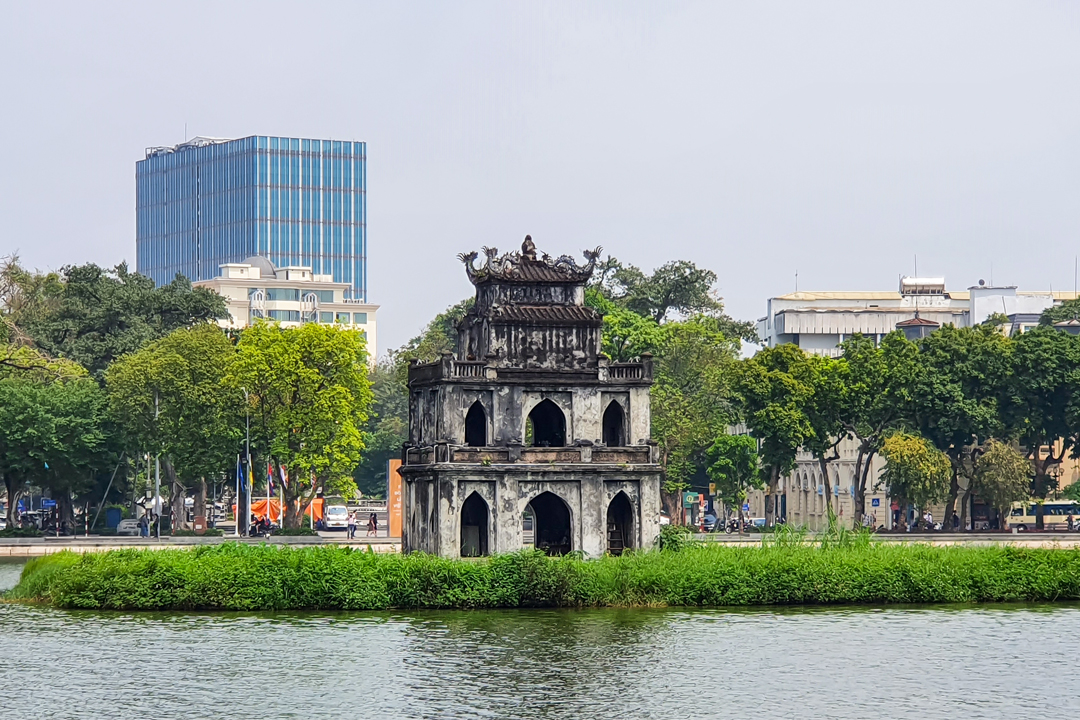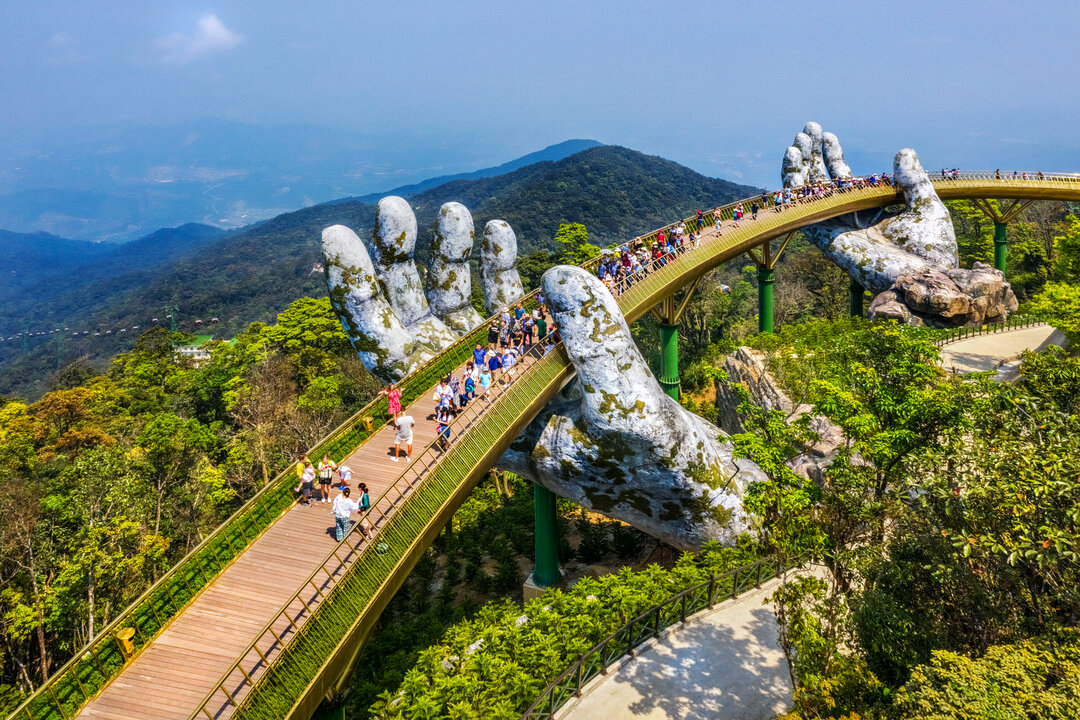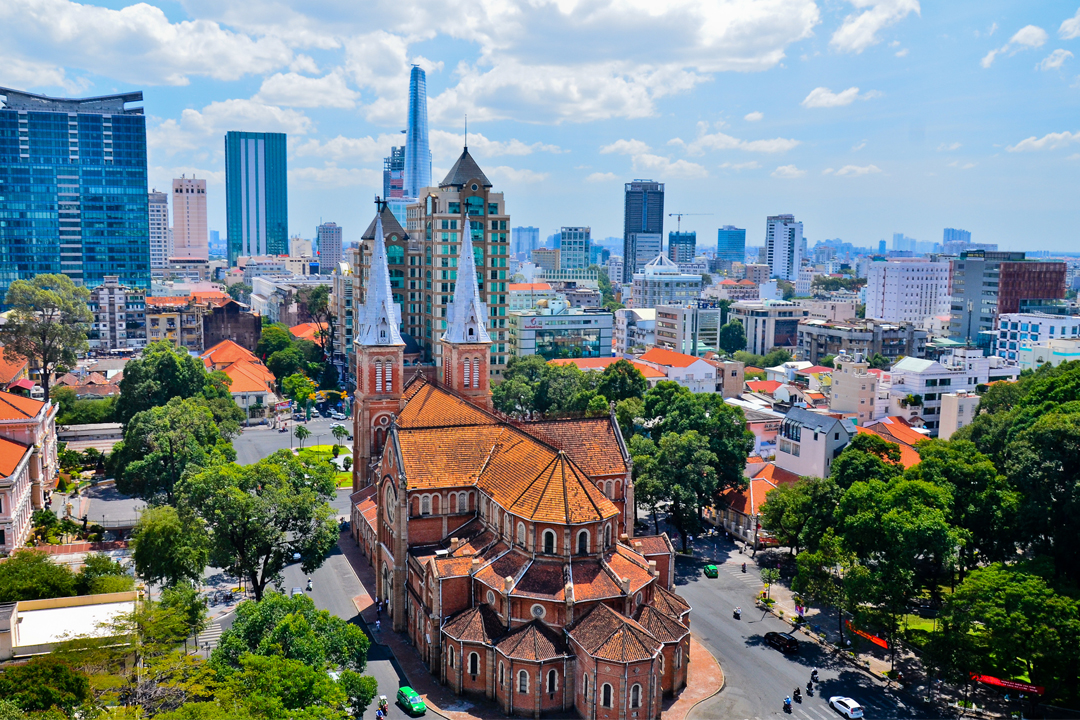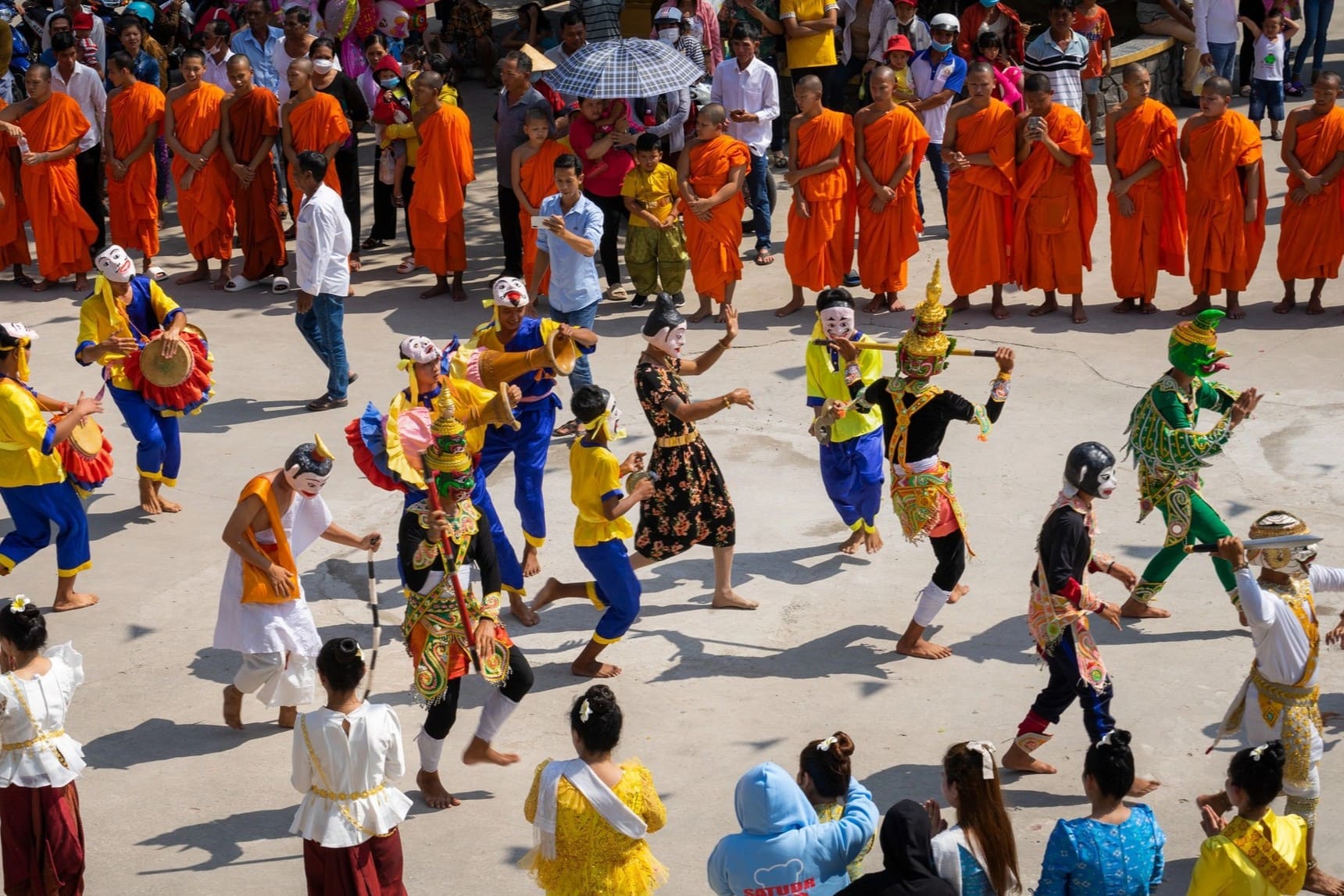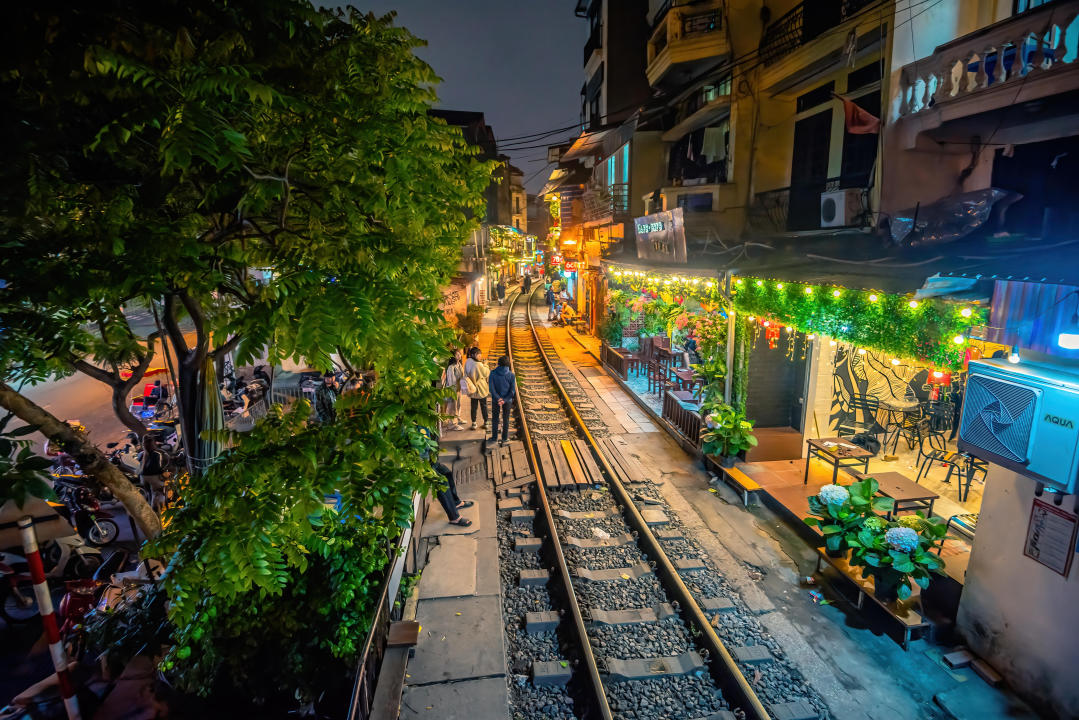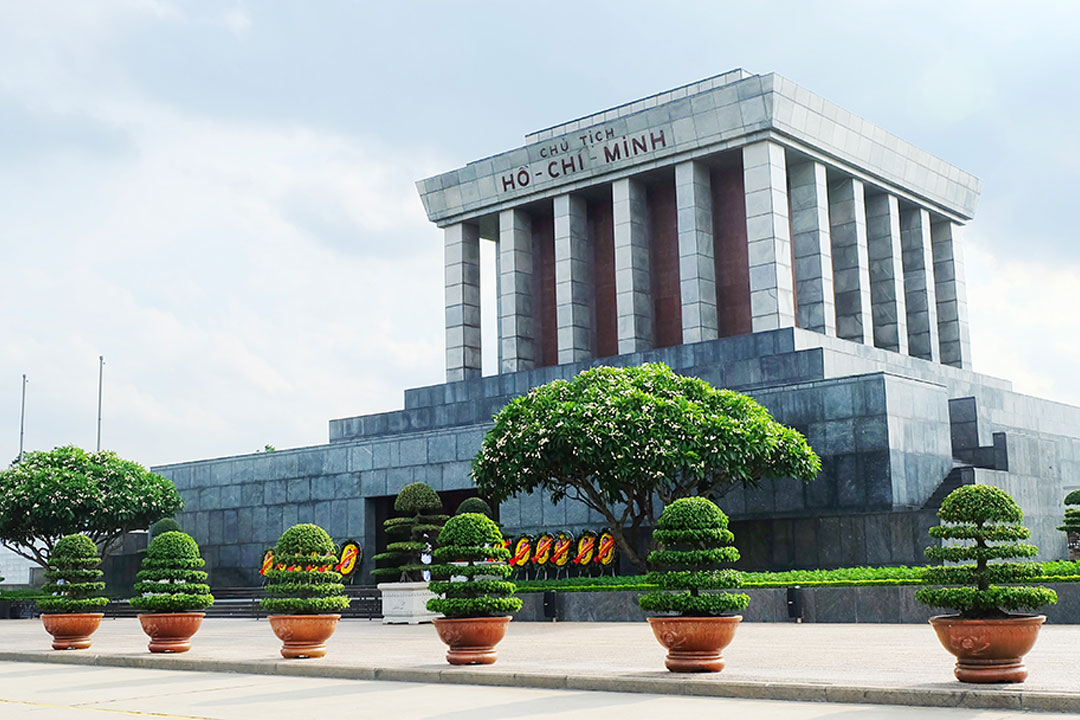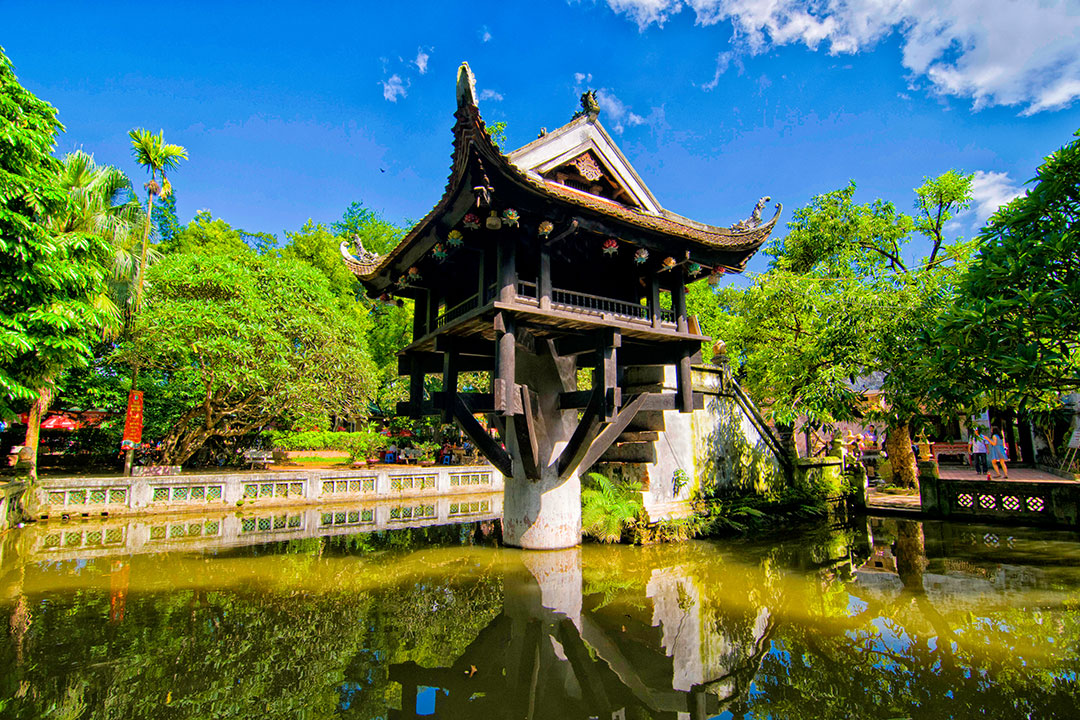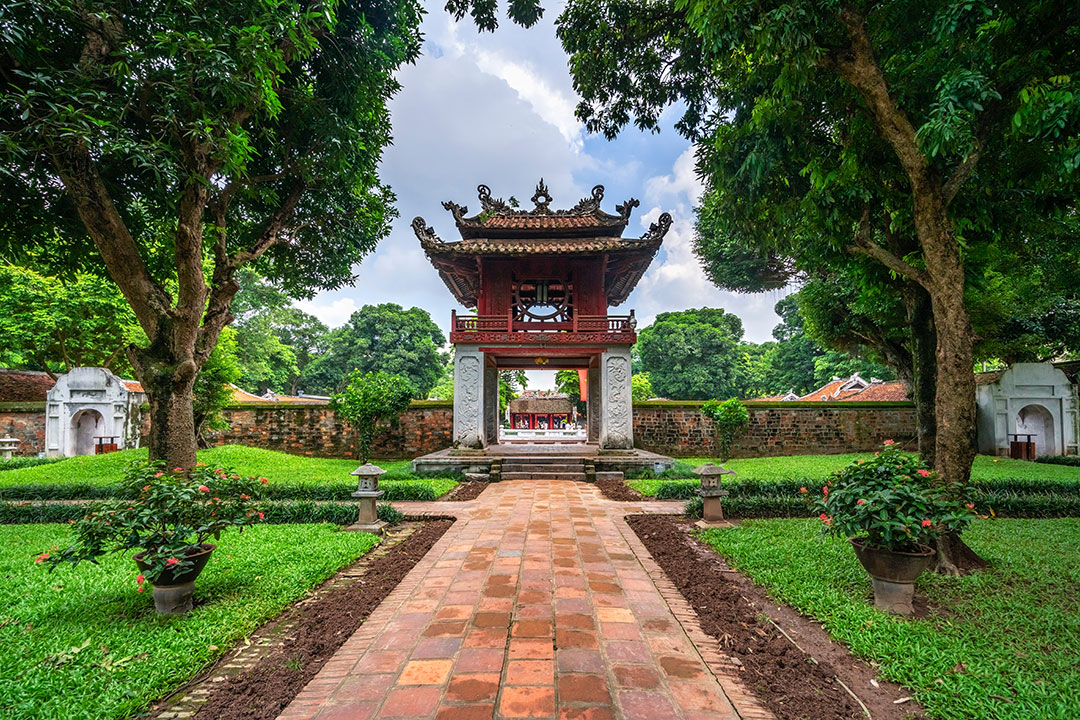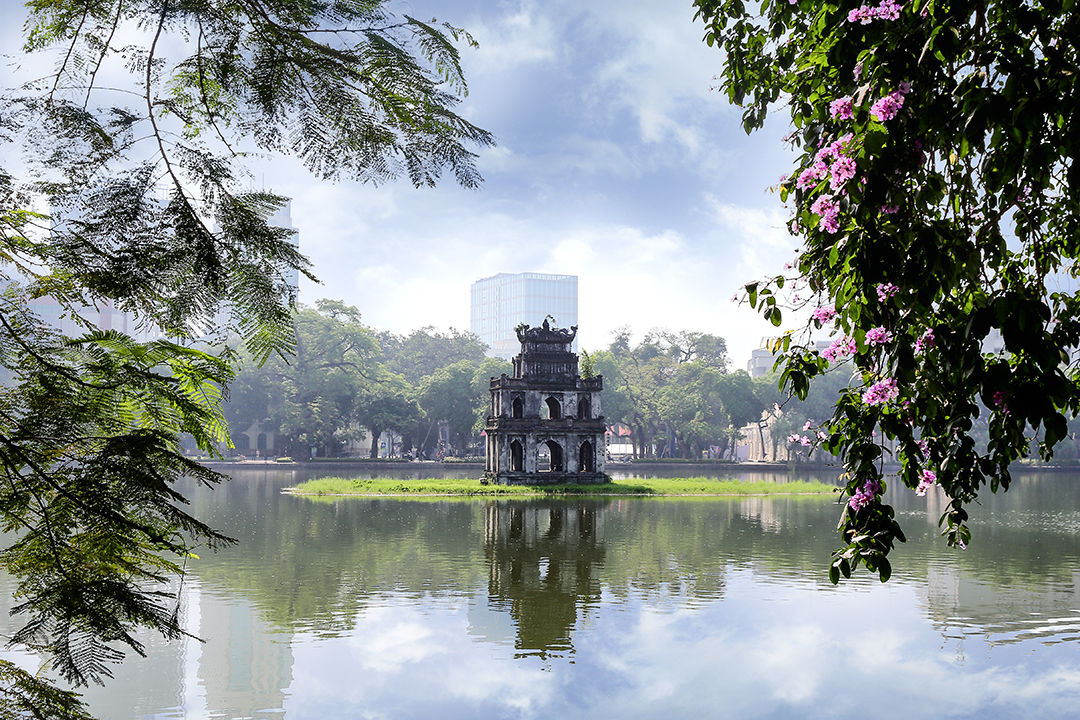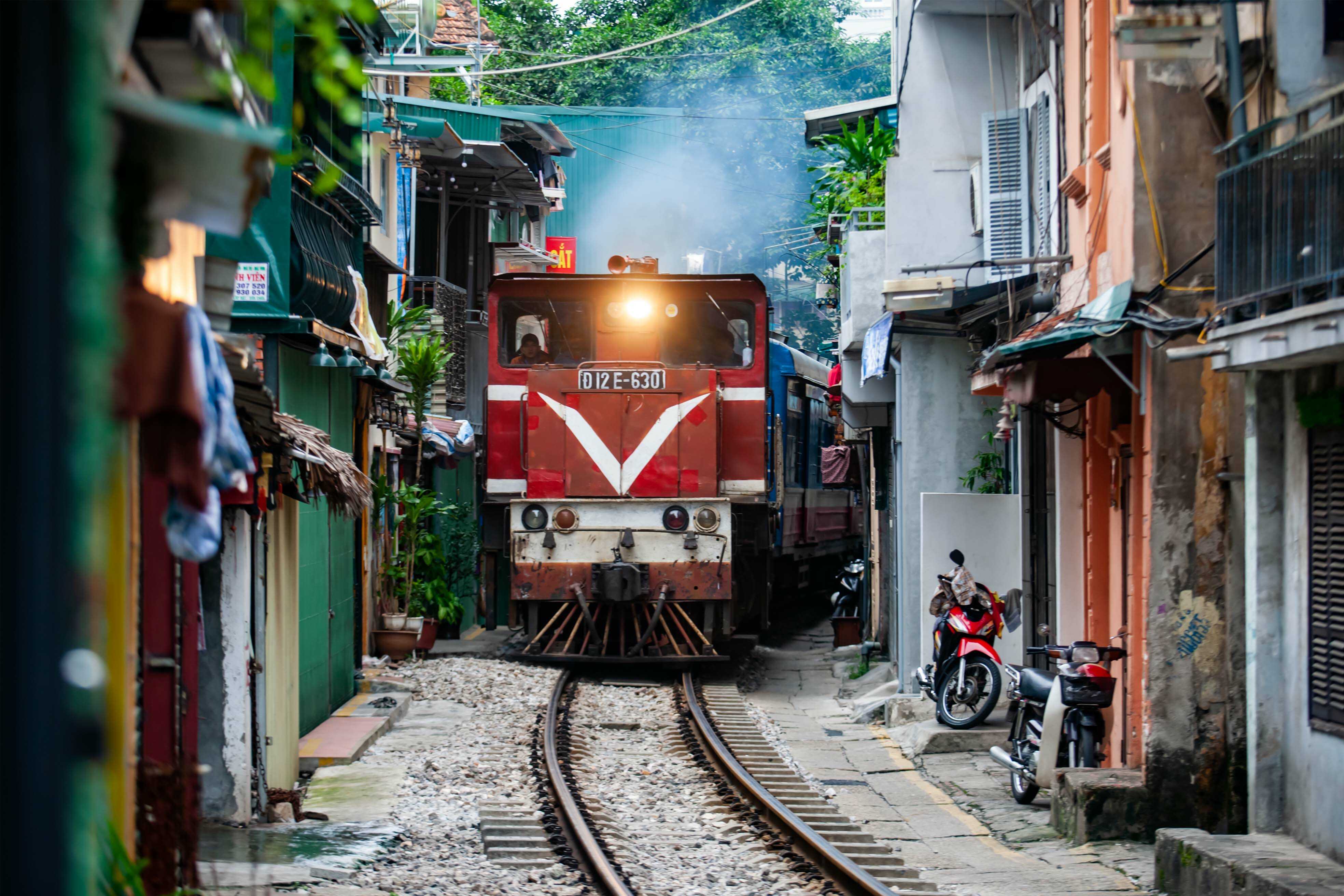Hanoi Train Street: Overview, Historical Background, Things To Do & Travel Guide
Hidden within Hanoi’s bustling Old Quarter, Hanoi Train Street is one of the city’s most extraordinary sights. This is a place where daily life unfolds just inches from the thunderous passage of a train. This narrow alley, lined with weathered houses and charming cafes, comes alive as locals sip coffee and chat mere moments before the Reunification Express barrels through. Originally built during the French colonial period, the tracks have long been a functional artery of Vietnam’s railway system. Over time, they’ve evolved into a unique cultural landmark, drawing travelers eager to witness the surreal blend of danger, tradition, and urban charm.
Generations of families have lived alongside these tracks, their routines intimately woven into the train’s strict timetable. Children play, vendors prepare meals, and residents go about their daily lives in a space that transforms from a peaceful alley into a high-alert zone in seconds. However, this delicate coexistence has faced increasing scrutiny in recent years. Concerns over safety and over-tourism have led authorities to restrict access, creating an ongoing dialogue between local businesses, residents, and policymakers.
For those eager to experience Hanoi Train Street, understanding its history, regulations, and the best ways to visit responsibly is key. Beyond the spectacle of a train rushing past, the area offers an authentic glimpse into Hanoi’s urban fabric, where tradition meets modern tourism in an ever-evolving narrative. This guide of GTrip will help you navigate not just the logistics of visiting, but also the deeper cultural significance that makes Hanoi Train Street an unforgettable place.
Overview of Hanoi Train Street
Hanoi Train Street is an extraordinary glimpse into the heart of Vietnam’s capital, where tradition, modernity, and daily life intertwine in a narrow, bustling alleyway. Located in the Hanoi Old Quarter, this captivating street is defined by a functioning railway track that runs alarmingly close to residential homes, small businesses, and street cafes. Trains pass just inches away from doorsteps, creating a mix of thrill and tension that fascinates both locals and travelers. The proximity of the trains to everyday life sets Hanoi Train Street apart from similar spots worldwide.
Over the decades, the community built its life around the tracks, adapting to the train's predictable yet imposing presence. Despite the city's modernization, the street has retained its authentic, lived-in charm, a place where locals hang laundry, prepare meals, and carry out daily routines amid the periodic rumble of passing trains. This unique blend of heritage and daily life reflects Hanoi's dynamic spirit and also embodies a cultural resilience that has withstood the test of time.
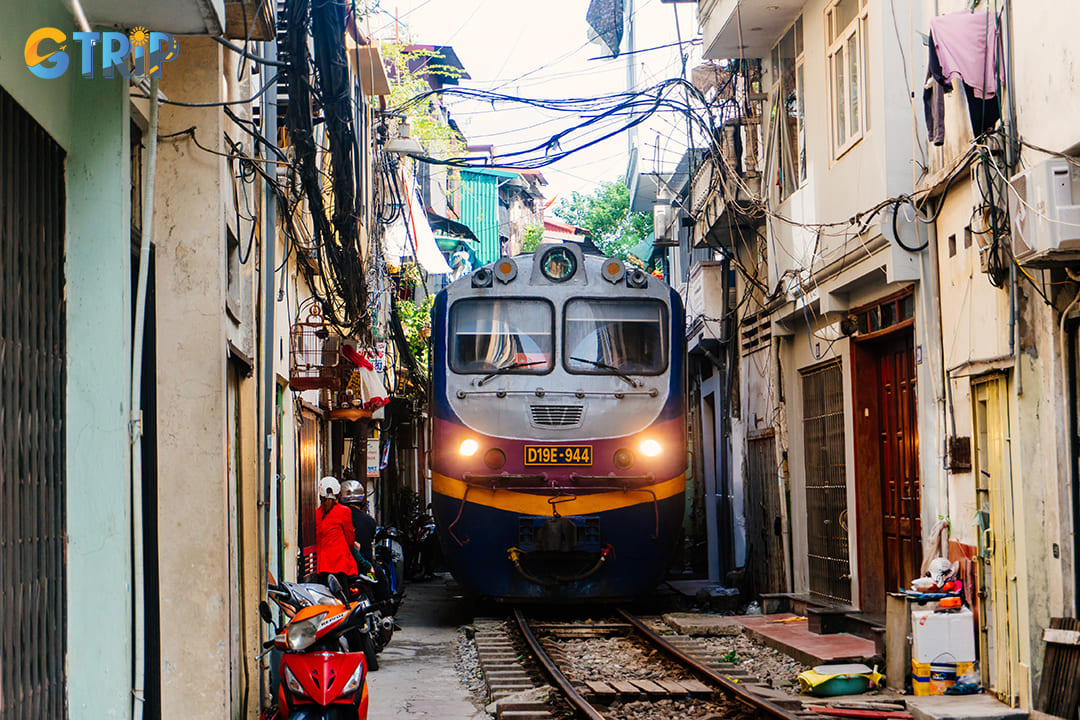
This captivating street is defined by a functioning railway track that runs alarmingly close to residential homes, small businesses, and street cafes
The growing fame of Hanoi Train Street on social media platforms like Instagram and TikTok has transformed it into a global phenomenon. Influencers and travel enthusiasts flock here to capture the surreal moment of a train gliding past patrons sipping coffee or taking selfies just inches from the tracks. While this digital fame has bolstered tourism, it has also raised challenges concerning crowd control and safety, leading to occasional restrictions on visitor access.
Ultimately, Hanoi Train Street is more than just a popular tourist spot, it is a living, breathing representation of Hanoi’s adaptability and cultural vibrancy. The sight of a train barreling through the narrow passageways is not merely a spectacle, it is a testament to the seamless coexistence of modernity and tradition.
Historical background and development of Hanoi Train Street
Hanoi Train Street traces its origins back to the early 20th century, built by the French in 1902 during the colonial period as part of the Indochina rail network. Initially designed to transport goods and facilitate colonial administration, the railway later became a crucial part of connecting Hanoi to major regions like Saigon and Haiphong Port. Over time, as Hanoi's population expanded and urbanized, residential neighborhoods emerged along the tracks, embedding the railway into the daily life of the local community.
The Vietnam War (1955 - 1975) left significant impacts on the railway, with repeated bombings causing severe damage to the tracks. After the war, the government prioritized rebuilding the country, restoring the railway to reconnect North and South Vietnam. Despite modernization, the train tracks running through Hanoi’s Old Quarter remained a raw, unpolished part of the city until the late 2010s. The narrow alleyways, with trains passing just inches from homes and cafes, captivated international travelers seeking a unique urban experience.
Today, Hanoi Train Street is a blend of local life and modern tourism, balancing authenticity and curiosity. While businesses benefit from increased tourism, concerns about overcrowding and safety have led to periodic restrictions. Nevertheless, the street stands as a testament to Hanoi's layered history, from colonial infrastructure to cultural icon, symbolizing the city's resilience and vibrant urban spirit.
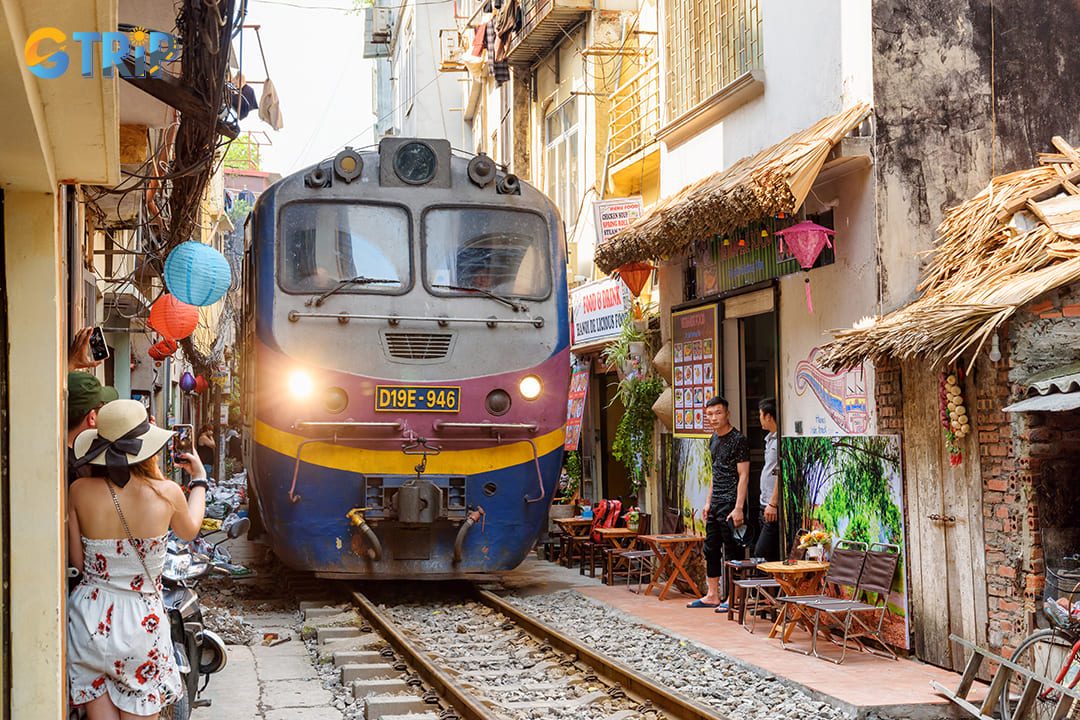
Hanoi Train Street is a blend of local life and modern tourism, balancing authenticity and curiosity
3 things to do at Hanoi Train Street
Visiting Hanoi train street is not just about watching a train pass by, it's an immersive experience that captures the essence of Hanoi's urban life. With its unique blend of local culture, bustling cafes, and thrilling moments when the train sweeps through mere inches, Hanoi Train Street offers more than just a fleeting photo opportunity. Below are the most captivating things to do when you visit this iconic spot.
1. Witness the train pass by up close
- Adrenaline and awe: The most iconic experience on Hanoi Train Street is watching the train pass by, often at arm’s length. It typically occurs twice daily, creating a blend of anticipation and thrill as locals and tourists alike press against walls or retreat into nearby cafes.
- Timing matters: While the typical train schedule is around 9:15 am to 11:45 am and 3 pm to 11 pm, it's essential to verify train timings with local cafe owners or official sources, as variations may occur. Missing the train can mean missing the heart of the experience.
- Respect for safety: Keep in mind that although the experience is exhilarating, safety is a priority. Stay within designated safe areas and respect the guidance of local cafe owners and authorities.
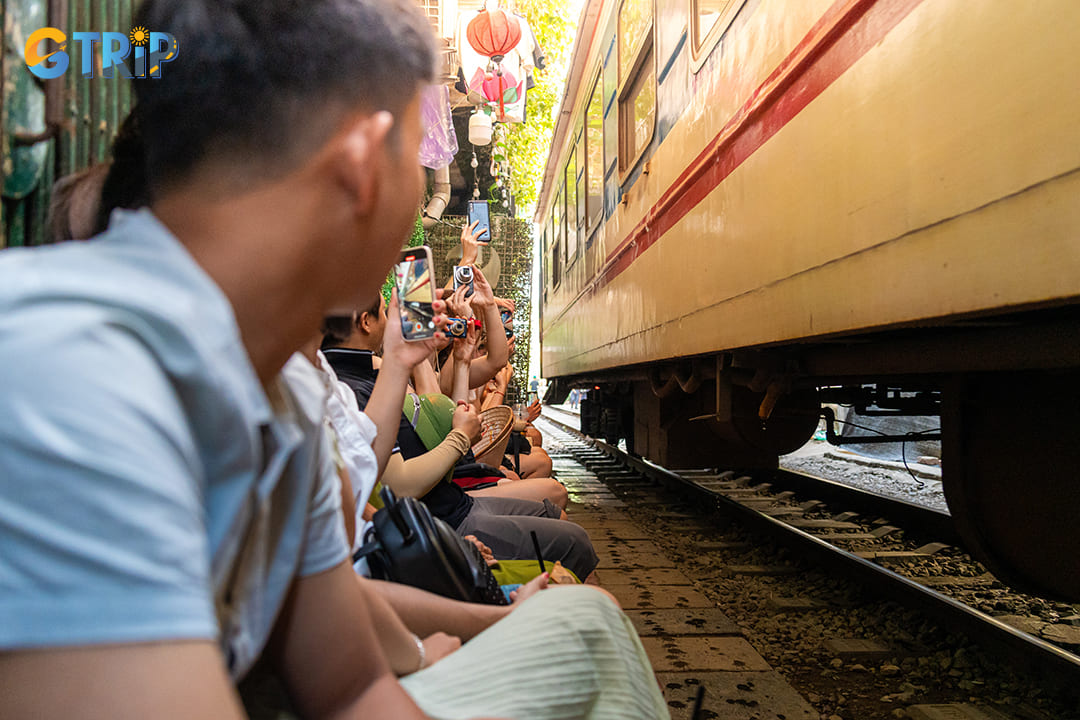
The most iconic experience on Hanoi Train Street is watching the train pass by, often at arm’s length
2. Take street photography with train tracks
- Iconic visuals: The narrow tracks lined with rustic, weathered buildings and vibrant cafes make Hanoi Train Street a paradise for photographers. The blend of French colonial architecture and authentic Vietnamese living creates unique, contrasting visuals.
- Timing for perfect shots: Early morning or late afternoon offers softer natural light, reducing harsh shadows and enhancing the charm of the narrow alleyway. When the train approaches, the dynamic energy of the bustling street adds a dramatic element to photographs, offering prime views of the passing train. Many tourists coordinate with cafe owners to capture the iconic moment safely.
Here are some advanced tips:
- To elevate your photography at Hanoi Train Street, use the natural lines of the train tracks to guide the viewer’s eye. Experiment with symmetry and the rule of thirds to position the moving train dynamically within your frame. Don’t just capture wide shots, zoom in to reveal intricate textures, such as weathered walls, rusted metal, and subtle interactions that add layers of storytelling.
- Vary your perspective for more compelling shots. Shoot low to emphasize the tracks' length, making the train appear more dramatic. Alternatively, find a higher vantage point, like a balcony or rooftop cafe, to showcase the street’s layout and the train’s path.
- Include candid shots of locals going about their day to add scale and context. These moments highlight the unique coexistence of everyday life with the extraordinary rush of the passing train.
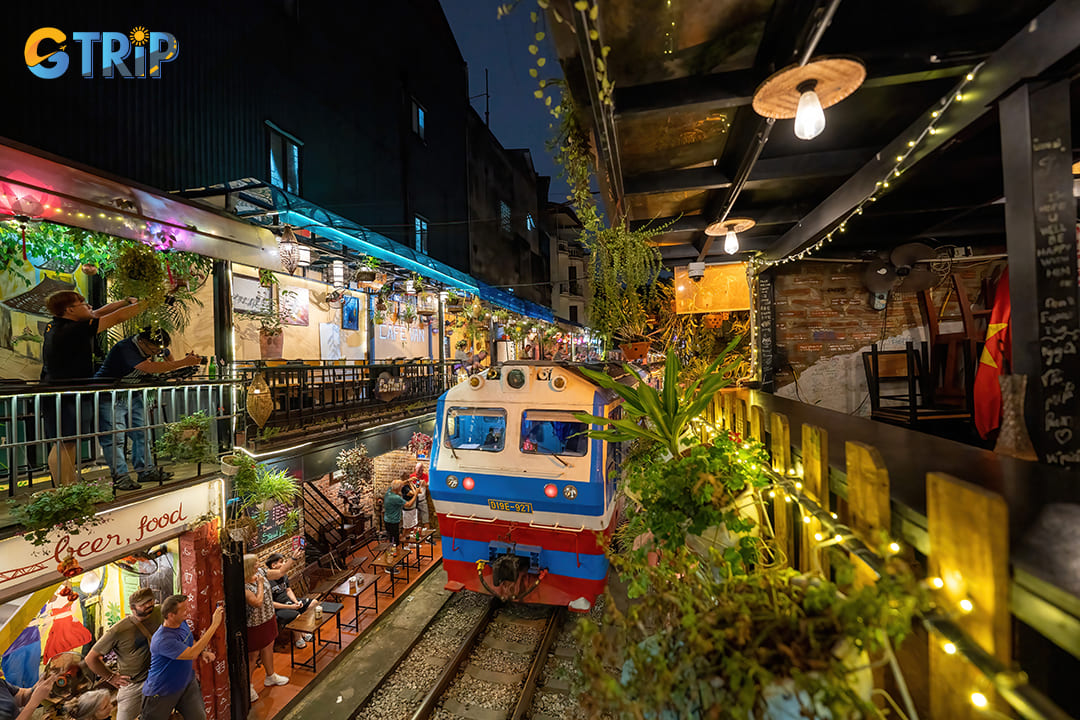
Find a higher vantage point, like a balcony or rooftop cafe, to showcase the street’s layout and the train’s path
3. Savor Vietnamese coffee at trackside cafes
- Immersive cafe culture: The trackside cafes along Hanoi Train Street offer more than just coffee, they provide a front-row seat to the captivating daily rhythm of the area.
- Taste unique coffee varieties: Along with classic Vietnamese drip coffee, many cafes serve specialties like velvety egg coffee and refreshing coconut coffee. Some places get creative, offering coffee variations infused with flavors like cinnamon or chocolate, catering to curious tastes.
- Popular cafes: Railway Tuan Cafe (112 Train Barrier, 5 Tran Phu, Hang Bong, Hoan Kiem District, Hanoi). ChuChu Railways (Tran Phu Ward, Hang Bong Ward, Hoan Kiem District, Hanoi). Indochina Station Cafe (116 Train Barrier, No. 5a Tran Phu Ward, Cua Dong, Hoan Kiem, Hanoi)...
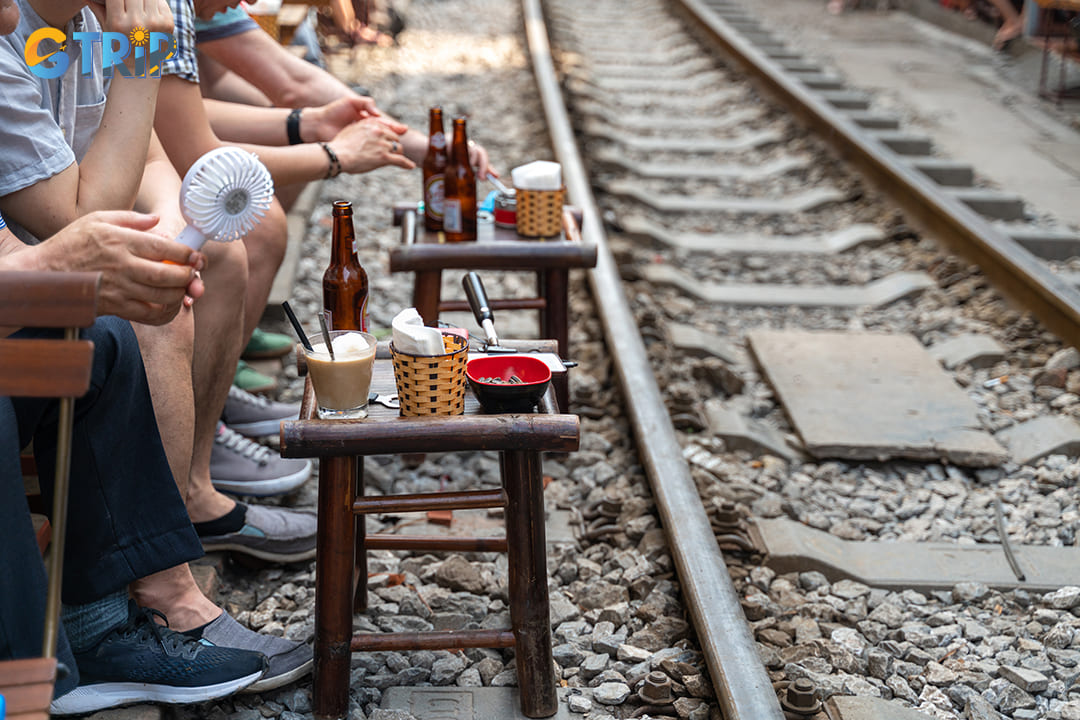
The trackside cafes along Hanoi Train Street provide a front-row seat
These family-run cafes have adapted to the growing interest of travelers, turning their homes into cozy, rustic spaces that welcome tourists. By enjoying a cup of coffee here, you're not just savoring a delicious drink, you're also supporting the local community and helping preserve the area's unique character. Experiencing Hanoi Train Street is a blend of adrenaline, cultural immersion, and curiosity. It's a space where urban living meets raw, unfiltered history reminder of Hanoi's evolution and the resilience of its people.
Differentiating train street 1 vs train street 2
There are two primary sections of Hanoi Train Street that attract tourists:
Train Street 1: Phung Hung
Located near the Old Quarter, the Phung Hung section of Hanoi Train Street runs between Phung Hung and Tran Phu Streets. This area is known for its vibrant atmosphere and close proximity to major landmarks, making it a prime spot for tourists wanting to experience the thrill of the train passing through. With Hanoi Flag Tower and the Ho Chi Minh Mausoleum just a short walk away, this section is easily accessible for those exploring the city's historical sites.
Phung Hung is home to some of the most popular cafes along Train Street, including Coffee Chill 96, Eisenbahn Kaffee, MAY Cafe, and Lagoon Rooftop Ha Noi. These spots offer prime viewing angles for capturing the dramatic moment when the train rushes past. Thanks to its strong presence on social media, Phung Hung has become the go-to location for Instagram-worthy photos, drawing both local and international tourists eager to experience its unique charm.
However, its popularity comes with challenges. Due to safety concerns, authorities have imposed strict regulations on entry, making access more restricted than in previous years. Additionally, the area tends to be overcrowded, especially during peak tourist seasons, which can make it difficult to secure a good viewing spot. Despite these limitations, Phung Hung remains the most iconic and sought-after section of Hanoi Train Street.
Four entrances to Access Phung Hung Train Street:
- Entrance 1: Near the intersection of Dien Bien Phu and Ton That Thiep Streets. (No. 8D Dien Bien Phu Street, Hoan Kiem, Hanoi)
- Entrance 2: Located at the junction of Tran Phu and Phung Hung Streets. (No. 5 Tran Phu Street, Hoan Kiem, Hanoi)
- Entrance 3: Found near the intersection of Phung Hung and Nguyen Van To Streets. (No. 62 Phung Hung Street, Hoan Kiem, Hanoi)
- Entrance 4: Accessed from Nguyen Quang Bich Street leading onto Phung Hung. (No. 141 Phung Hung Street, Hoan Kiem, Hanoi)
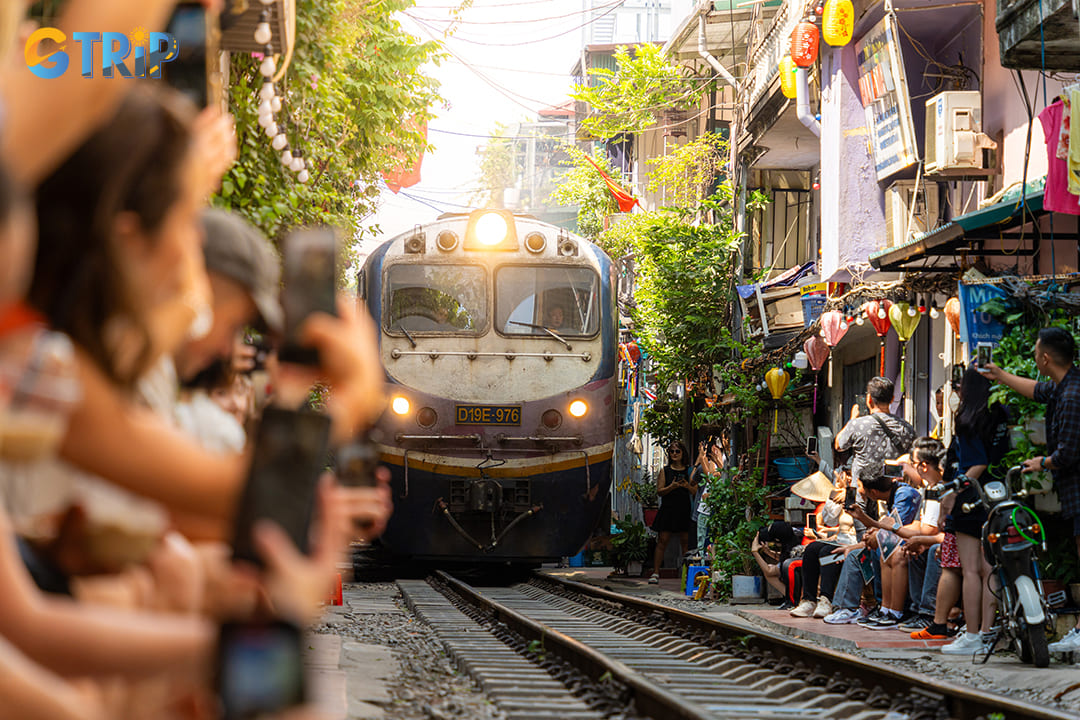
Phung Hung section of Hanoi Train Street is known for its vibrant atmosphere and close proximity to major landmarks
Train Street 2: Le Duan
Situated south of Hanoi Railway Station, the Le Duan section of Train Street runs between Kham Tien and Le Duan Streets. Unlike the more famous Phung Hung area, this section offers a quieter and more authentic glimpse into local life. Here, the train tracks weave through a residential neighborhood, where daily routines unfold naturally, undisturbed by large crowds of tourists.
One of the biggest advantages of Le Duan is its relaxed atmosphere. With fewer tourists, it’s easier to observe and capture the daily interactions of residents who have lived alongside the tracks for generations. The area is also home to several local eateries, making it a great spot to enjoy authentic Hanoi street food. While there are fewer cafes compared to Phung Hung, places like Ruby Train Coffee and Nam Vy Coffee still offer cozy spots to watch the train pass by.
However, the quieter nature of Le Duan also means fewer businesses catering specifically to tourists. Seating options for train viewing are more limited, and the area lacks the social media fame of Phung Hung, making it less of a hotspot for photography enthusiasts. Despite this, for those looking for a more immersive and less commercialized experience of Hanoi Train Street, Le Duan remains a hidden gem worth exploring. Entrance to access Le Duan Train Street: 224 Le Duan, Kham Thien, Dong Da, Hanoi.
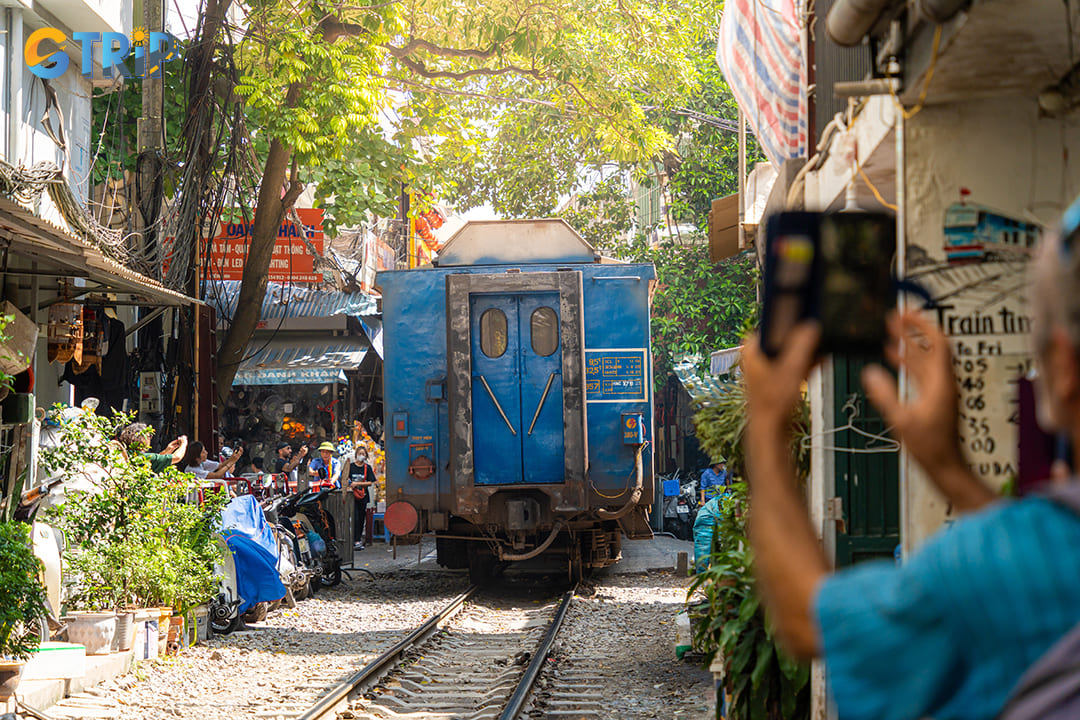
Le Duan section offers a quieter and more authentic glimpse into local life
Tourists seeking a vibrant, Instagrammable experience often opt for Train Street 1, while those desiring a quieter, culturally immersive experience may prefer Train Street 2. While some sources and traveler reviews highlight differences in ridership, variety of train lines, cafes, and regulations, these differences can change over time. It’s best to check the information more closely and ask locals for clarification.
Train schedules & planning tips for visiting Hanoi Train Street
Here are train schedules and planning tips that you can consider before visiting the train street.
Train schedules
Hanoi Train Street is renowned for its close-up views of trains passing through narrow residential alleys and has no entrance fee. The train schedule is a key element that shapes the visitor experience. Traditionally, the Reunification Express, the train line that runs through Hanoi Train Street, passes by twice daily, typically around 3:00 pm and 7:00 pm. However, the exact timing can vary based on factors like weather conditions, train maintenance, and rail traffic.
Below is an example train schedule table for Hanoi Train Street:
| Day | Train times |
|---|---|
| Monday - Friday | 7:00 PM, 7:45 PM, 8:45 PM, 9:30 PM, 10:00 PM |
| Saturday & Sunday | 8:30 AM, 9:30 AM, 11:30 AM, 3:20 PM, 4:30 PM, 5:30 PM, 6:00 PM, 7:20 PM, 7:45 PM, 8:45 PM, 9:15 PM |
Please note: These are example schedules and are not permanent. Actual train times may vary.
It's important to understand that these schedules are not set in stone. The unpredictability adds to the charm and thrill of witnessing a train pass through such a narrow urban corridor. Residents and business owners often adapt to these variations, warning tourists of approaching trains with a sense of communal awareness.
In recent years, as a response to increasing tourism and safety concerns, local authorities have occasionally adjusted the train schedules, sometimes resulting in temporary suspensions or modified timings. Therefore, relying on static information may lead to disappointment if the train does not appear as expected.
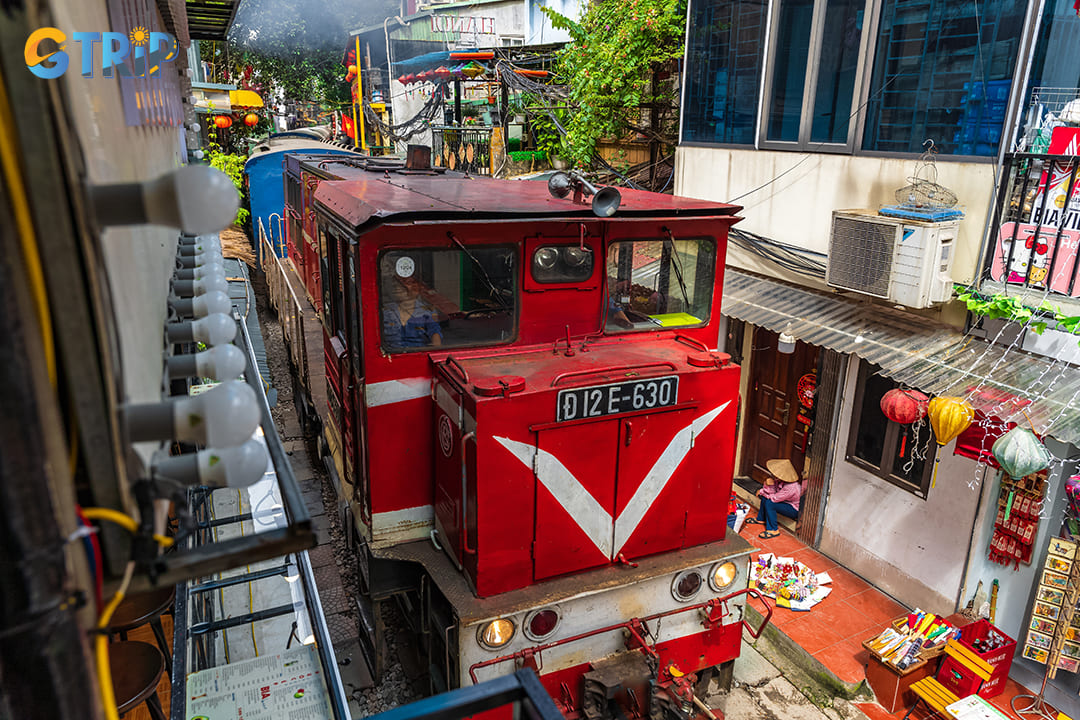
The train schedule is a key element that shapes the visitor experience
Tips for planning your visit around the schedule
To ensure you experience the exhilarating moment of the train's passage, consider these practical tips:
- Arrive early: Plan to arrive at least 30 minutes before the commonly reported train times. This provides a buffer for any schedule variations and allows time to explore the area.
- Seek local advice: The best and most accurate way to confirm train schedules is by speaking to local cafe owners or residents. Many cafes have become accustomed to providing this information to tourists.
- Avoid peak tourist hours: If you prefer a quieter experience, consider visiting on weekdays or earlier in the day. Weekend afternoons can become crowded, potentially diminishing the charm of the experience.
- Positioning for views: The most popular viewing spots are at cafes along the street. These businesses often reserve seating for customers who buy a drink, a mutually beneficial arrangement that supports local commerce while offering a safe, unobstructed view of the train.
Understanding the train schedules at Hanoi Train Street is crucial for maximizing the experience while respecting the daily lives of local residents. Being mindful of these schedules not only ensures a memorable visit but also helps maintain the harmony between tourism and the local community.
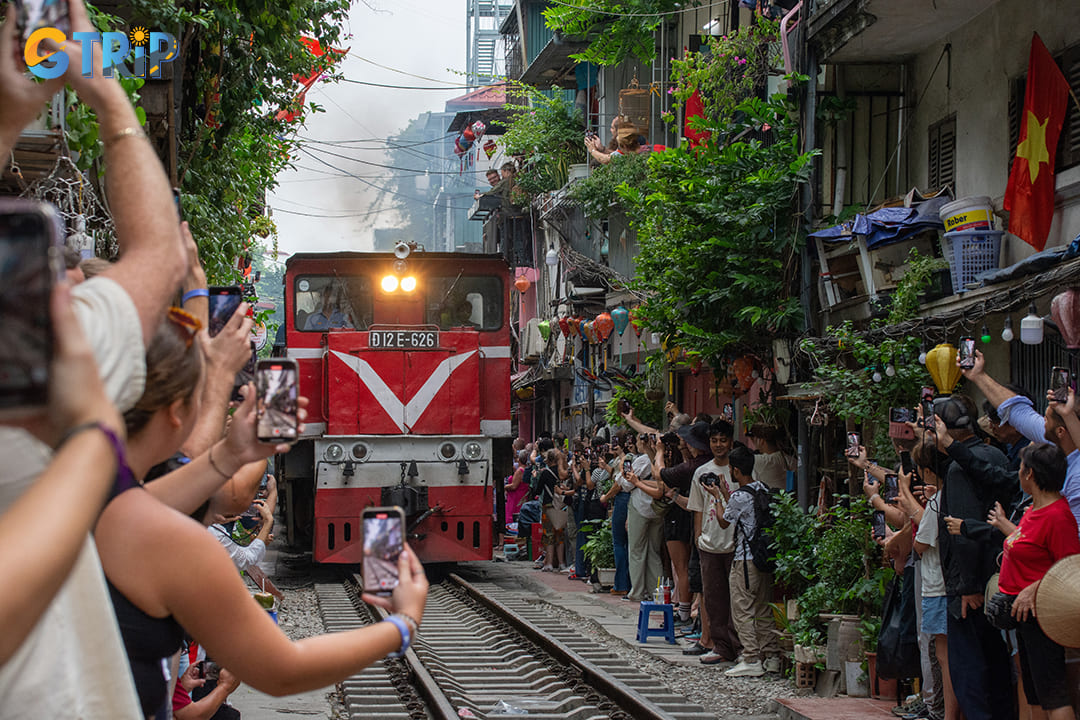
Understanding the train schedules at Hanoi Train Street is crucial for maximizing the experience
When is the best time to visit Hanoi Train Street during the day?
For a relaxed and immersive experience during the day, weekends are especially ideal. On weekends, you can catch morning passes (typically between 7:00 - 8:00 AM) in a quieter atmosphere, perfect for photography and soaking in local life without the evening rush. Afternoon passes (around 4:30 - 5:30 PM) provide dynamic energy and natural lighting, making it easier to capture stunning images and enjoy a leisurely cup of Vietnamese coffee at a local cafe.
In addition, you should come at night because of the unique atmosphere provided by the bright sources of lights of cafes, and street lights and also the temperature is also cooler. However, the evening is also the time when many people come to Hanoi Train Street to visit the most, so please consider it. Always check with local cafe owners for real-time schedule updates, as timings can vary. This balanced daytime schedule offers both peaceful moments and a touch of vibrant activity, ensuring a truly memorable visit to Hanoi Train Street.
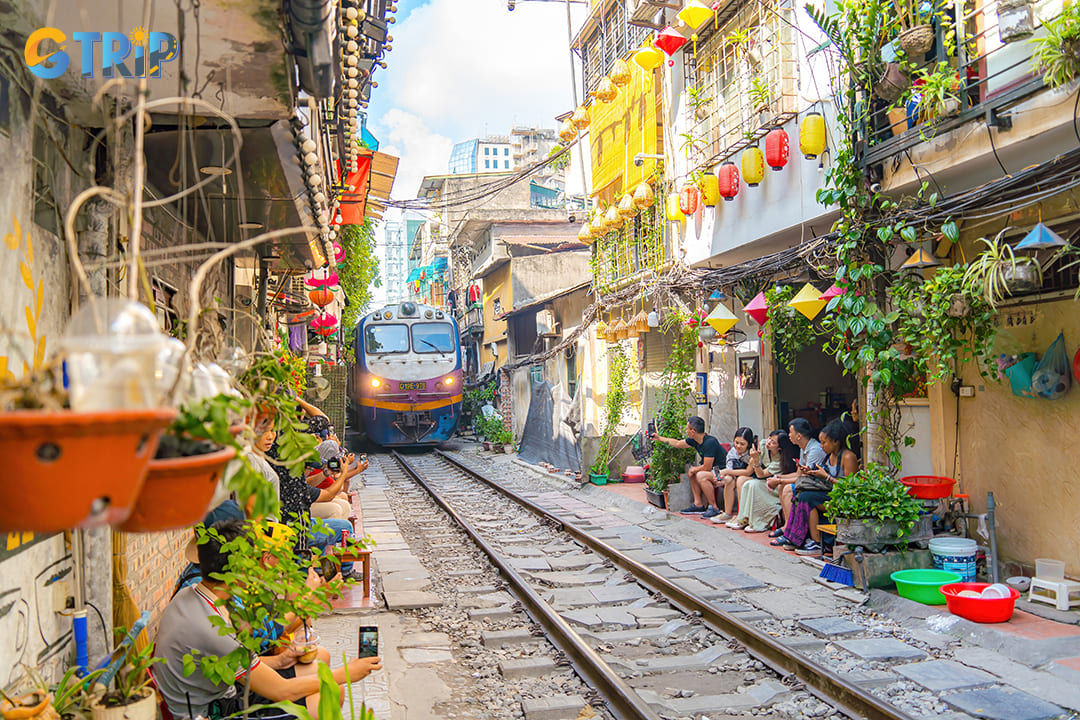
For a relaxed and immersive experience during the day, weekends are especially ideal
How to get to Hanoi Train Street?
Navigating to Hanoi Train Street is relatively straightforward, given its central location in the Old Quarter. However, access has become more regulated following incidents of overcrowding and concerns about safety. The entrances are fenced and frequently patrolled by police or local business owners. To access it, you must follow a shop owner and purchase at least one drink from one of the cafes.
Below are some ways to get to Hanoi Train Street:
By taxi or ride-hailing
- Reliable ride-hailing apps like Grab and Be operate in Hanoi, offering convenient and affordable taxi services.
- Traditional taxis like Mai Linh or G7 are also available, though it's recommended to request a metered fare.
- Approximate fare from Hoan Kiem Lake to Hanoi Train Street ranges from 50,000 to 100,000 VND ($2 - $4).
By bus
- Buses numbered 32, 34, and 38 have stops near Le Duan Street, providing budget-friendly access.
- Fare: 7,000 VND (approximately $0.30).
- Downside: Buses may be crowded, and schedules can be inconsistent.
Walking routes
- For travelers already in the Old Quarter, walking is a popular option. Starting from Hoan Kiem Lake, a 20-minute walk via Hang Bong Street and Cua Nam leads to the track area.
- Walking also allows tourists to explore hidden alleys, street food stalls, and local markets along the way.
Map tips:
- Using Google Maps or Maps.me is advisable to navigate accurately, as many sections of the Old Quarter can be confusing due to their similarity.
- Certain cafes along the track offer guided entry, making them effective landmarks for finding the most picturesque spots.
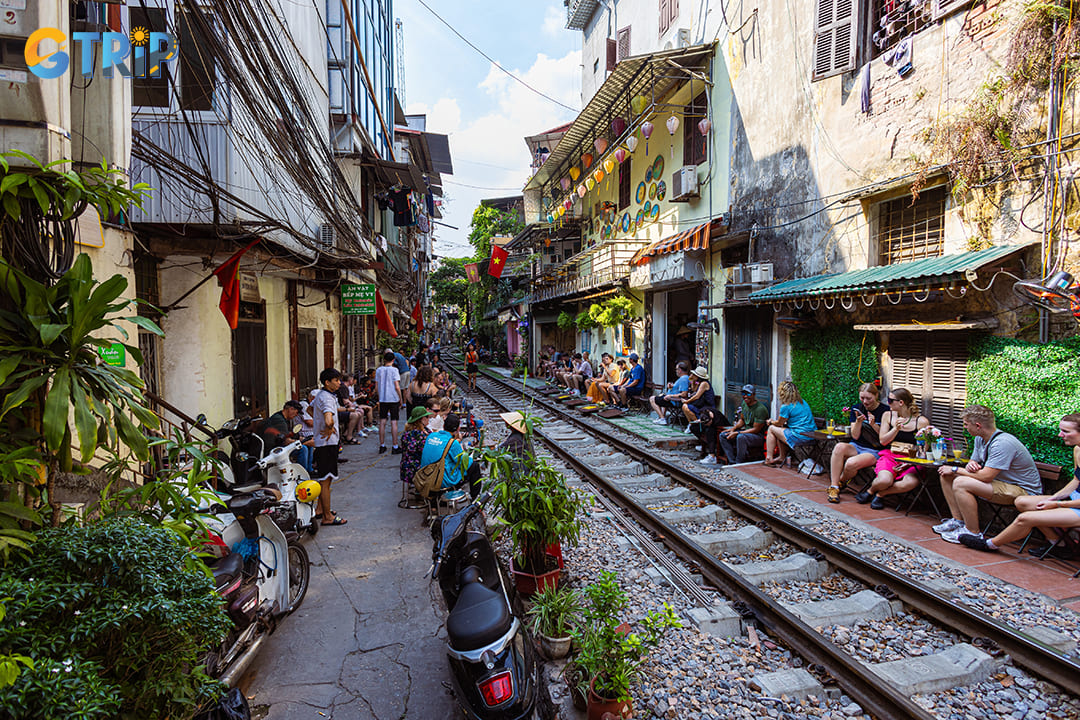
Navigating to Hanoi Train Street is relatively straightforward, given its central location in the Old Quarter
Safety, regulations, and visitor guidelines
You should follow these regulations to ensure your safety.
Local safety measures and enforcement
Hanoi Train Street, despite its charm and allure, poses genuine safety challenges. The narrowness of the track, often just inches away from buildings and cafes, makes it a high-risk area for pedestrians, especially during train passages. Recognizing this, local authorities and residents have established safety measures to protect both tourists and the community.
- Role of police and authorities: The Hanoi municipal government has periodically closed the street to tourists due to safety concerns, particularly after reports of reckless behavior. When open, police officers frequently patrol the area, especially during peak visiting hours. They are responsible for enforcing restrictions and guiding tourists to safer observation spots.
- Barricades and restricted areas: In some sections, barricades have been placed to maintain a safe distance between tourists and the train tracks. These barriers help control crowds and minimize the risk of accidents, especially when the train approaches.
- Guided access via cafe owners: Many cafes and small businesses along Hanoi Train Street act as unofficial guides. They instruct tourists on when and where to stand safely, often inviting them into their establishments during train passages. This collaborative approach between local businesses and law enforcement helps create a safer yet immersive experience.
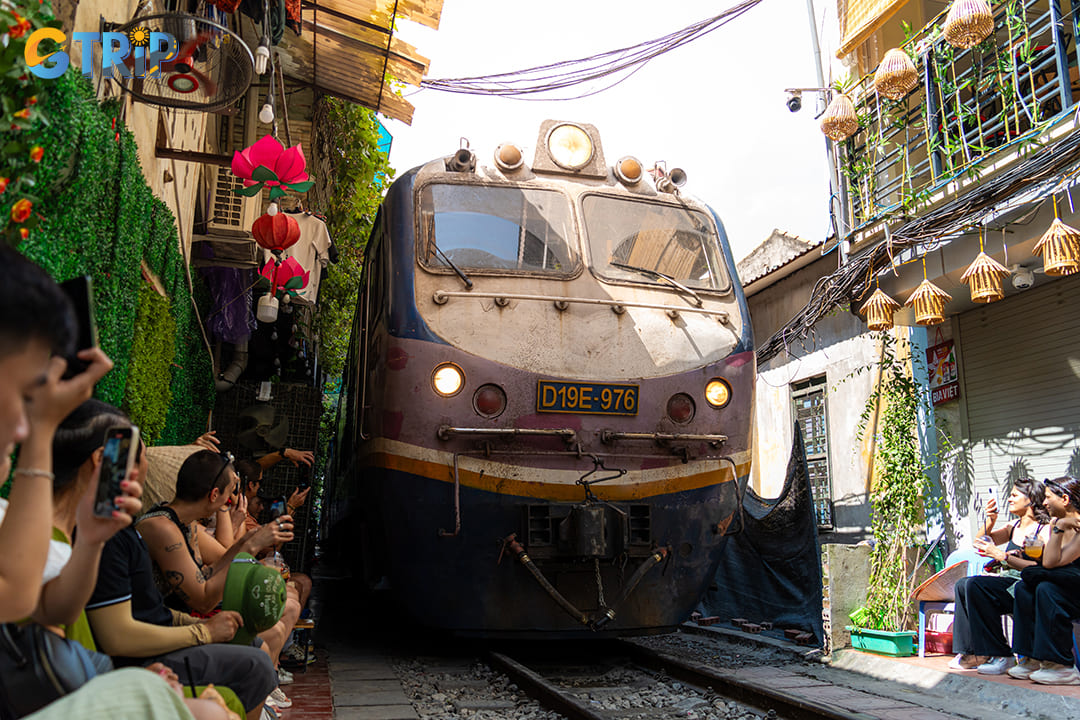
The narrowness of the track often just inches away from buildings and cafes
Visitor dos and don’ts
Visiting Hanoi Train Street can be a memorable experience, but it requires awareness and adherence to certain guidelines to ensure safety for everyone.
Visitor dos:
- Follow local guidance: Always listen to the instructions of police officers, cafe owners, and residents. If a local advises you to move, comply immediately.
- Stay behind designated barriers: Do not cross barricades or enter restricted areas, especially during train schedules. These boundaries exist to protect you.
- Be alert to train schedules: While the train typically passes twice daily, schedules can vary. Check with local businesses for the most accurate timings before visiting.
- Support local businesses: If possible, view the train from a cafe or restaurant. Many establishments require a minimum purchase, but this helps support the local economy and ensures a safe vantage point.
Visitor don’ts:
- Avoid reckless photography: The desire for a perfect photo can lead to dangerous behavior, such as standing too close to the tracks. Prioritize safety over social media content.
- Do not block the tracks: Standing or sitting on the tracks for pictures is strictly prohibited and poses a significant danger.
- Avoid alcohol consumption: While many cafes serve alcoholic beverages, excessive drinking near the tracks can lead to accidents and irresponsible behavior.
- Do not disrupt residents: Remember that this is a residential area. Avoid loud, disruptive behavior that might disturb the locals' daily lives.
Common mistakes to avoid:
- Assuming there’s always time to move before a train arrives. The train can approach more quickly and quietly than expected.
- Ignoring signs or dismissing safety announcements. Many accidents have been a result of neglecting these warnings.
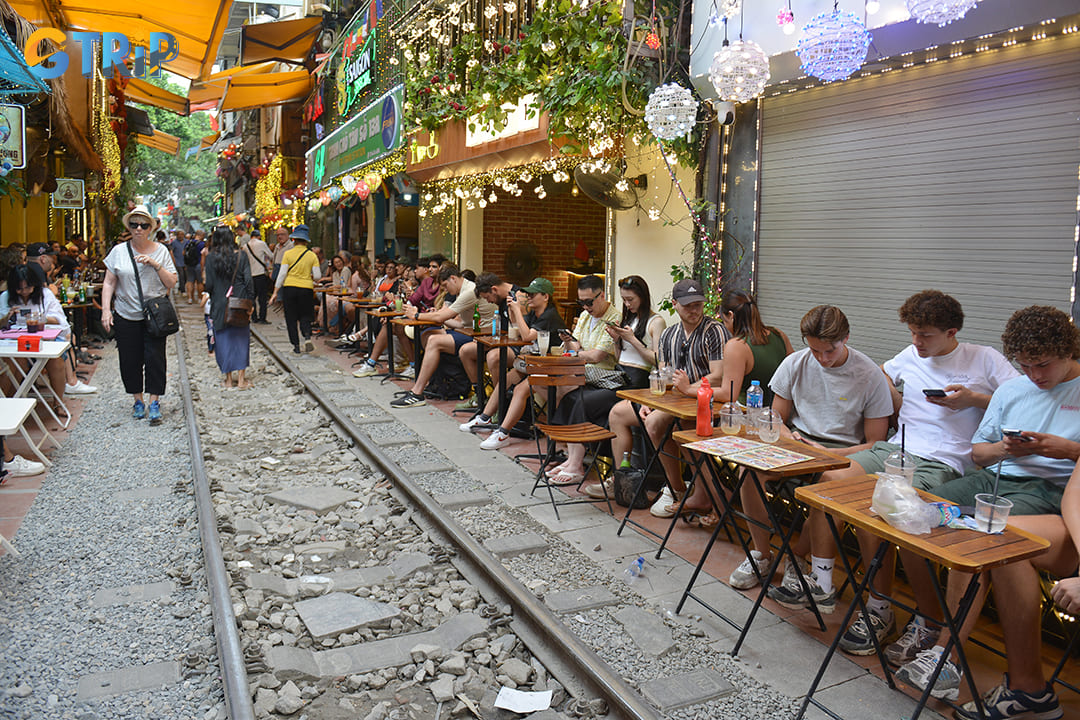
Visiting Hanoi Train Street can be a memorable experience
Nearby attractions from Hanoi Train Street
Hanoi Train Street is surrounded by an array of fascinating attractions that can significantly enrich your visit to this iconic. Here are some notable attractions that can enhance your trip:
Hoa Lo Prison Museum (Around 1 km)
Also known as the "Hanoi Hilton", Hoa Lo Prison Museum holds deep historical significance. Originally built by the French to imprison Vietnamese revolutionaries, it later housed American POWs during the Vietnam War. The site preserves a haunting yet important narrative of resilience, featuring historical artifacts, photographs, and preserved prison cells that tell the stories of those who endured captivity within its walls.
Visiting Hoa Lo Prison Museum adds depth to the exploration of Hanoi’s modern landscape. Understanding its history provides a powerful contrast to the city’s present-day vibrancy, including the narrow lanes of Hanoi Train Street. The stories of hardship and perseverance offer a profound perspective, making every corner of Hanoi feel even more layered with history.
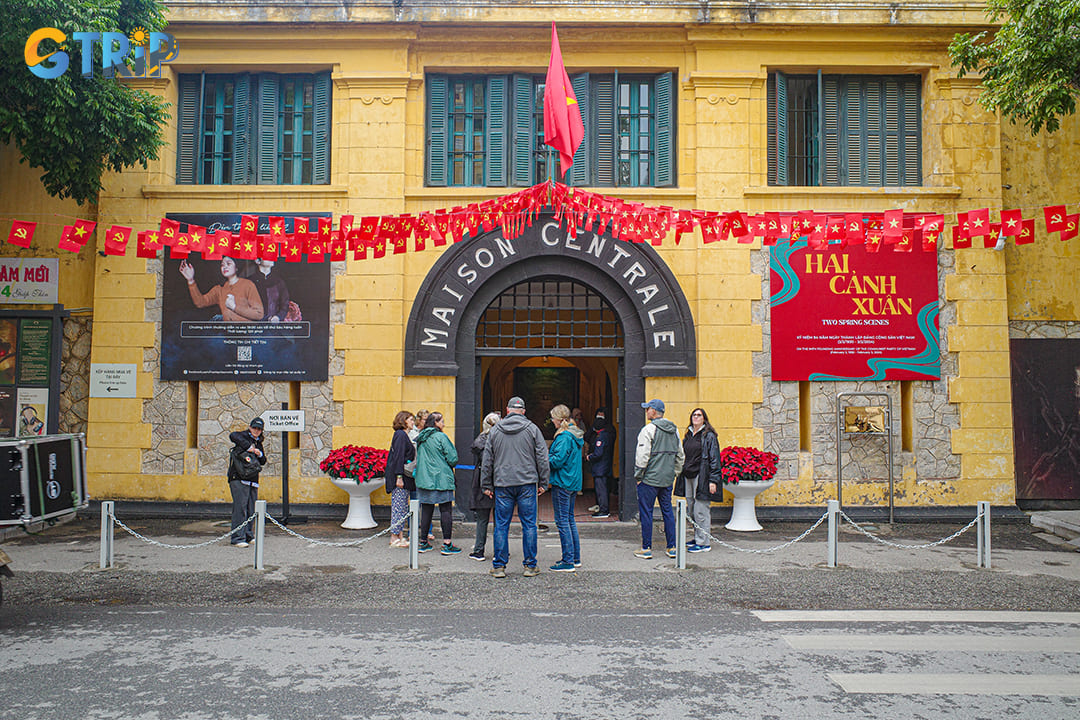
Hoa Lo Prison Museum holds deep historical significance
Temple of Literature (Around 1.7 km)
Built in 1070, the Temple of Literature is Vietnam’s first national university and a tribute to Confucius. This iconic site represents centuries of scholarly tradition and intellectual pursuit. You can admire its well-preserved Vietnamese architecture, tranquil courtyards, and stone steles inscribed with the names of past scholars who achieved academic excellence.
The serene and scholarly atmosphere of the Temple of Literature offers a cultural contrast to the fast-paced energy of Hanoi Train Street. It provides a glimpse into Vietnam’s academic legacy, allowing you to appreciate the country’s deep-rooted traditions before immersing yourself in the dynamic urban charm of Hanoi.
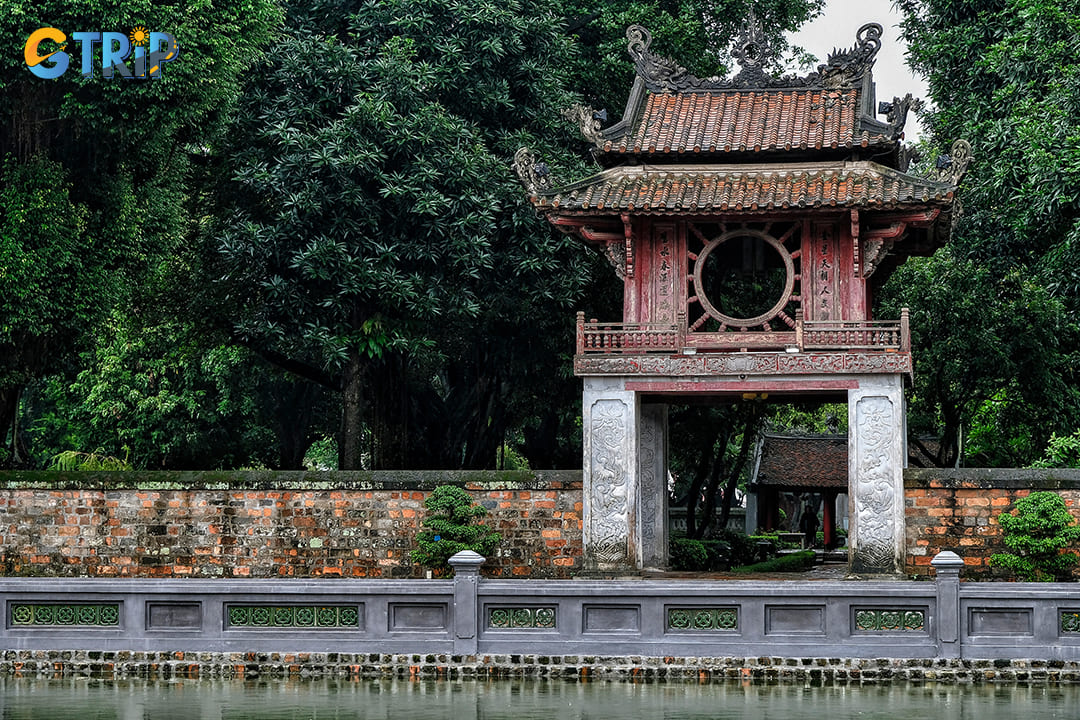
The Temple of Literature is Vietnam’s first national university and a tribute to Confucius
Old Quarter of Hanoi (Around 1.4 km)
Hanoi Old Quarter is the heartbeat of Hanoi, known for its maze-like streets, colonial-era architecture, and vibrant street food scene. This area is a sensory overload of sights, sounds, and flavors, with traditional markets like Dong Xuan Market offering everything from handcrafted goods to local delicacies. Wandering through these lively streets provides an authentic taste of Hanoi’s rich heritage and modern-day energy.
The Old Quarter’s chaotic yet captivating charm mirrors the essence of Hanoi Train Street. Both locations showcase the city’s ability to blend the old with the new, creating an immersive experience for travelers who want to embrace Hanoi’s distinctive atmosphere. Exploring the Old Quarter before or after visiting Train Street enhances the journey, offering a well-rounded perspective of the city's culture and daily life.
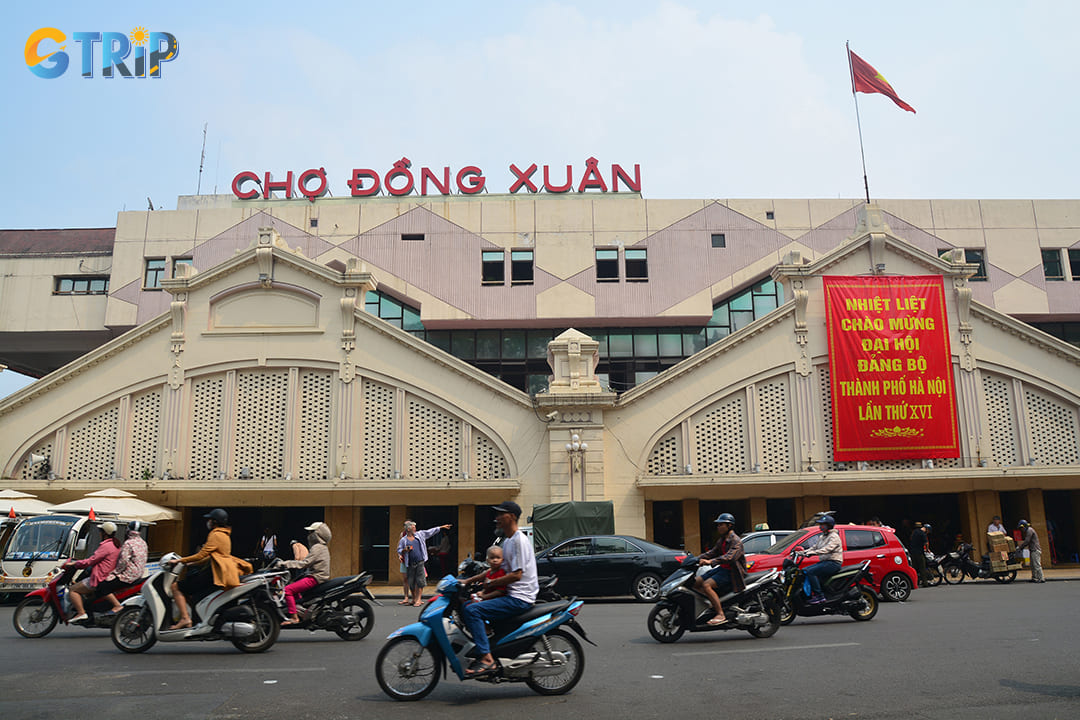
This area is a sensory overload of sights, sounds, and flavors with traditional markets like Dong Xuan Market
Vietnamese Women's Museum (Around 1.4 km)
The Vietnamese Women's Museum celebrates the contributions of women throughout the country's history, shedding light on their roles in war, culture, and everyday life. The museum's exhibits feature ethnographic displays, personal stories, and artifacts that highlight the resilience and strength of Vietnamese women from various ethnic groups.
Visiting this museum adds another layer of understanding to the local culture, especially when exploring Hanoi Train Street. Many women run small businesses along the tracks, from selling traditional coffee to managing family-owned cafes. Learning about their historical and social roles deepens the appreciation of how Hanoi’s communities sustain themselves in unique environments.

The Vietnamese Women's Museum celebrates the contributions of women throughout the country's history
Thien Quang Lake (Around 1.5 km)
Thien Quang Lake is a peaceful retreat in the heart of Hanoi, offering a scenic escape from the city's bustling streets. The lake is a favorite spot for both locals and tourists looking to enjoy morning Tai Chi sessions, evening gatherings, or simply a quiet stroll along the water’s edge. Its relaxed ambiance makes it an ideal place to observe everyday life in Hanoi.
This tranquil setting provides a stark contrast to the exhilarating rush of Hanoi Train Street. While Train Street is known for its intensity and movement, Thien Quang Lake offers a moment of calm reflection. Together, these two locations reveal different sides of Hanoi, one filled with high-energy urban charm, and the other embracing the slower rhythms of local life.
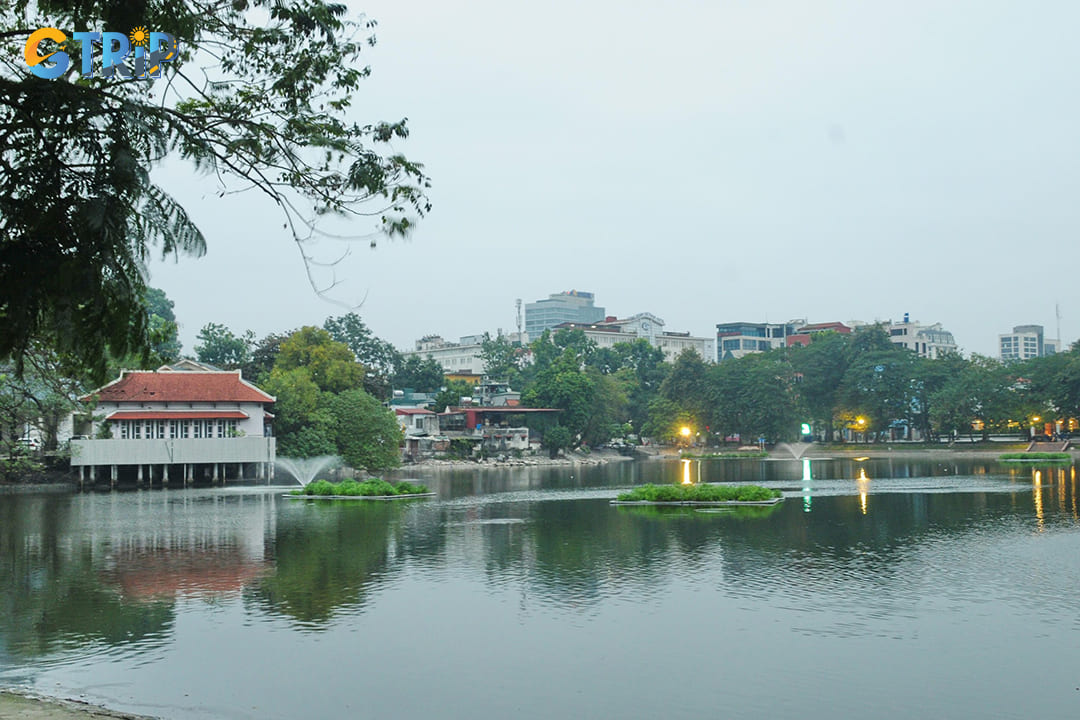
Thien Quang Lake is a peaceful retreat in the heart of Hanoi, offering a scenic escape from the city's bustling streets
Frequently asked questions when visiting Hanoi Train Street
Hanoi Train Street is one of the most unique attractions in Vietnam, drawing tourists eager to witness the rare spectacle of a train passing through a narrow residential street. Below are the most frequently asked questions about this famous site, covering everything from history to safety and the best places to watch the train.
1. Is it safe for tourists to visit Hanoi Train Street?
While the sight of a train passing inches away can be thrilling, safety is a serious concern. Authorities have implemented restrictions after several near-miss incidents. However, as long as you follow guidelines, the experience can be safe.
- Always follow the instructions of local cafe owners or guides.
- Stand at a safe distance (inside cafes or marked areas).
- Avoid standing on the tracks for photos right before a train arrives.
- Be aware that schedules can change, so a train may arrive unexpectedly.
2. Is Hanoi Train Street closed?
No, Hanoi Train Street is not permanently closed. However, due to safety concerns and past incidents, access to certain sections has been temporarily restricted or regulated. This train street is home to many locals there so it can never be closed. There are many signs to warn you about the safety there. Tourists typically enter the area through local cafes where a shop owner or guide escorts them to safe viewing spots. It’s always best to check the latest updates with local sources before your visit, as restrictions or entry rules may change at short notice.
3. How do locals manage safety around Hanoi Train Street?
Despite the apparent risks, residents have adapted their routines to train schedules:
- Children and pets are kept indoors before trains arrive.
- Shops and cafes close their doors temporarily during train times.
- Local cafe owners act as informal guides, ensuring tourists clear the tracks in time.
- Some residents rely on a "community alert system", where people notify each other when the train is approaching.
4. Can I visit Hanoi Train Street without a guide?
Absolutely. Many people explore the area on their own. However, if you’re unfamiliar with the area or want real-time schedule updates, asking local cafe owners or hiring a guide can enhance your experience.
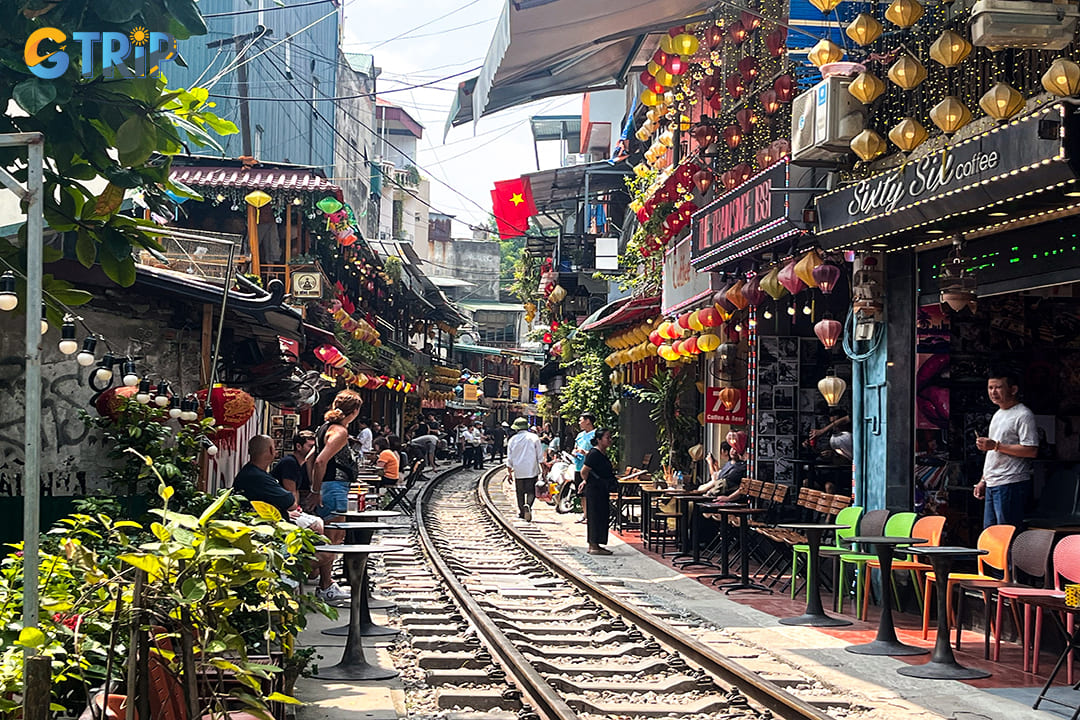
Hanoi Train Street is one of the most unique attractions in Vietnam
Hanoi Train Street offers a unique blend of history, culture, and excitement that few places in the world can match. From understanding its colonial origins to experiencing the thrill of a train passing mere inches away, this iconic spot reflects the dynamic spirit of Hanoi. If you're planning a trip to Hanoi or looking to delve deeper into its fascinating attractions, consider exploring nearby landmarks, local cafes, and cultural spots to enrich your journey. For more in-depth travel guides and curated itineraries around Hanoi and beyond, feel free to explore articles and Hanoi Tours of GTrip - Vietnam Travel Agency.

